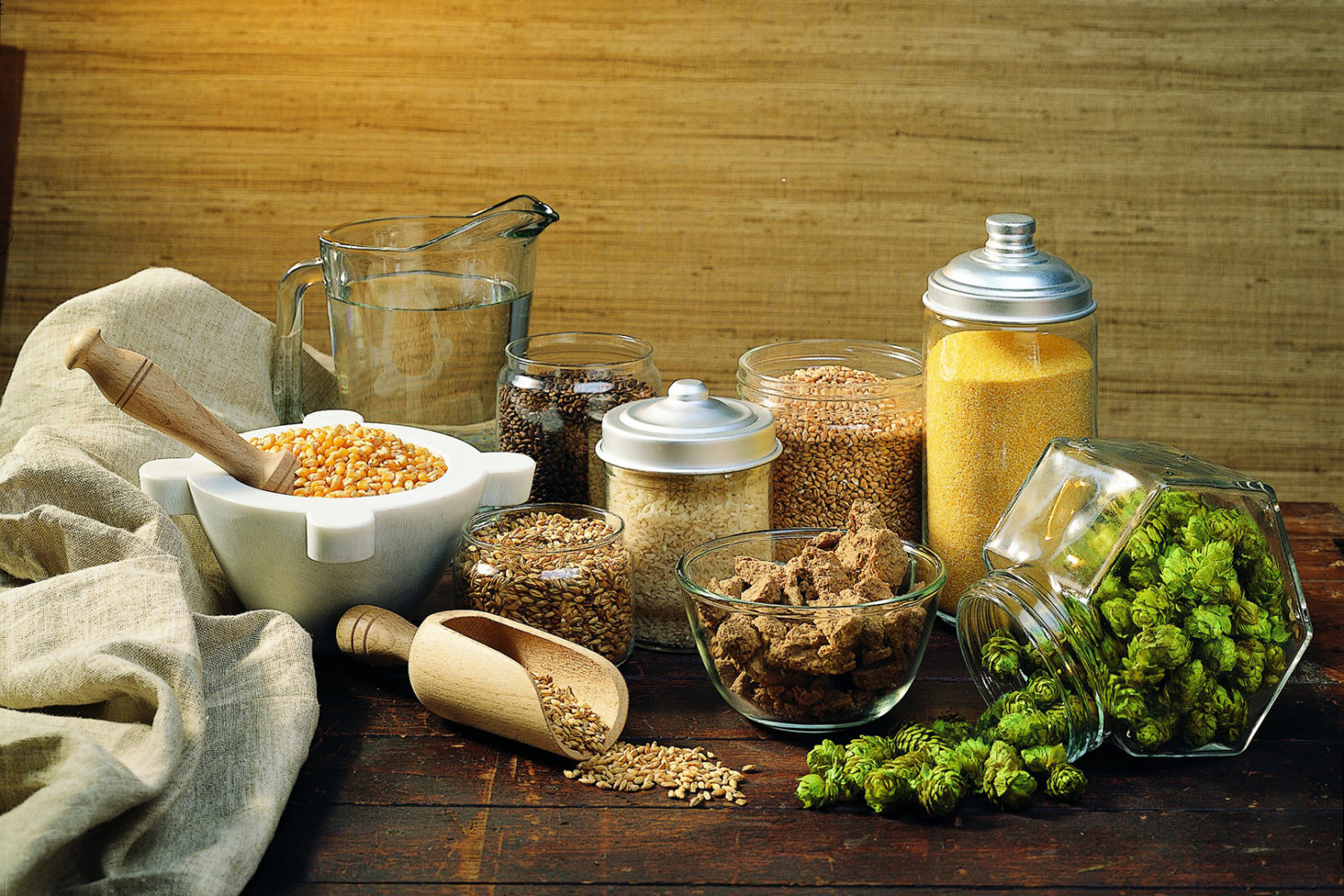How to adjust wort fermentability?
A wort produced by conventional brewing will show an apparent attenuation around 80-85% and almost 25% of carbohydrate extract will be present in final beer as non fermentable short chain dextrins.Sometimes, the brewer would like to increase this wort fermentability to obtain an apparent attenuation of 85-90%, 90-95%, 95-100%, = 100% or even > 100%. For a given alcohol level, the more attenuated beer the lower original gravity and therefore the lower raw material quantity involved. The traditional brewing methods are not very efficient to reach these aims. The use of appropiate exogenous enzymes allows to modulate almost as much as desired wort sugars profile and therefore wort fermentability as far as carbon hydrates are concerned.Different exogenous enzymes are available to modulate wort fermentability : amyloglucosidase (Glucosylase), pullulanase or limit dextrinase (Desatase), and maltogenic amylases alpha (Maltosylase) or beta.Amyloglucosidase (Glucosylase) is an exo-amylase which catalyses starch dextrins, oligosaccharides and long chains hydrolysis from non reducing ends to produce glucose units by hydrolysing quickly alpha-1,4 linkages and slowly alpha-1,6 linkages.
Pullulanase or limit dextrinase (Desatase), catalyses quick hydrolysis of alpha-1,6 linkages of starch dextrins, oligosaccharides and long chains.
Maltogenic alpha-amylase (Maltosylase) is an endo-amylase that hydrolyses at random alpha-1,4 bonds located in the inner regions of the starch substrate removing maltose units at each hydrolysis on a multi-chain action.
Maltogenic beta-amylase is an exo-amylase which hydrolysis starch chains from the non-reducing ends producing successive maltose units on an uni-chain action.
These enzymes may be used either in the brewhouse or during fermentation depending on the results expected. When used during brewing these four different enzymes will be inactivated during wort boiling.
When used during fermentation, residual activity will vary from an enzyme to another as well as enzyme shelf-life at 60°C.
Pullulanase or limit dextrinase (Desatase), catalyses quick hydrolysis of alpha-1,6 linkages of starch dextrins, oligosaccharides and long chains.
Maltogenic alpha-amylase (Maltosylase) is an endo-amylase that hydrolyses at random alpha-1,4 bonds located in the inner regions of the starch substrate removing maltose units at each hydrolysis on a multi-chain action.
Maltogenic beta-amylase is an exo-amylase which hydrolysis starch chains from the non-reducing ends producing successive maltose units on an uni-chain action.
These enzymes may be used either in the brewhouse or during fermentation depending on the results expected. When used during brewing these four different enzymes will be inactivated during wort boiling.
When used during fermentation, residual activity will vary from an enzyme to another as well as enzyme shelf-life at 60°C.
Desatase – Maltosylase – Glucosylase
Residual enzymatic activity in beer after 7 days of fermentation,
after 30 days of maturation and shelf-life in beer at 60°C
| Maltogenic α-amylase | 20% residual enzymatic activity after 7 days of fermentation 0% residual enzymatic activity after 30 days of maturation 1 min shelf-life at 60°C in beer |
| Maltogenic ß-amylase | 20% residual enzymatic activity after 7 days of fermentation 0% residual enzymatic activity after 30 days of maturation 1 min shelf-life at 60°C in beer |
| Pullulanase | 40% residual enzymatic activity after 7 days of fermentation 0% residual enzymatic activity after 30 days of maturation 1 min shelf-life at 60°C in beer |
| Amyloglucosidase | 100% residual enzymatic activity after 7 days of fermentation 100% residual enzymatic activity after 30 days of maturation 60 min shelf-life at 60°C in beer |
Equivalence of the enzymes here above and CBS trade names:
| Maltogenic alpha-amylase : Maltosylase Pullulanase : Desatase |
Amyloglucosidase : Glucosylase Maltogenic ß-amylase + Pullulanase MIX : Maxiferm |
This Table explains how to adjust wort fermentability by choosing judiciously one or more enzymes and where to apply them.
|
Apparent
Attenuation |
Enzyme
Name |
Dose
|
Point of addition
|
Residual activity
in beer |
|
85-90%
|
Maltosylase
|
0.5 to 5 g/hl
|
Start of fermentation
|
no active enzyme
in pasteurized beer |
|
90-95%
|
Glucosylase+
Desatase |
1-3 l/ton of grist
3-5 kg/ton of grist |
At mashing in
At mashing in |
no active enzyme
during fermentation |
|
95-100%
|
Desatase+
Maltosylase |
1-3 kg/ton of grist
4-8 g/hl of beer |
At mashing in
Start of fermentation |
no active enzyme
in pasteurized beer |
|
=100%
|
Desatase+
Maltosylase |
1-3 kg/ton of grist
2-5 g/hl of beer 4-8 g/hl of beer |
At mashing in
Start of fermentation |
no active enzyme
in pasteurized beer |
|
>100%
|
Glucosylase
|
3-5 g/hl of beer
|
Start of fermentation
|
no active enzyme
in pasteurized beer |
| Notes : | 1. Alpha-amino nitrogen is supposed to be in sufficient concentration and is not restrictive 2. The use of Glucosylase generates glucose. This last may cause loss of ability to uptake maltose by some sensitive yeast strains |

